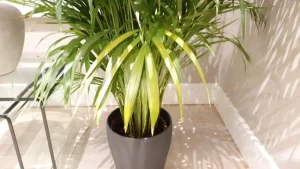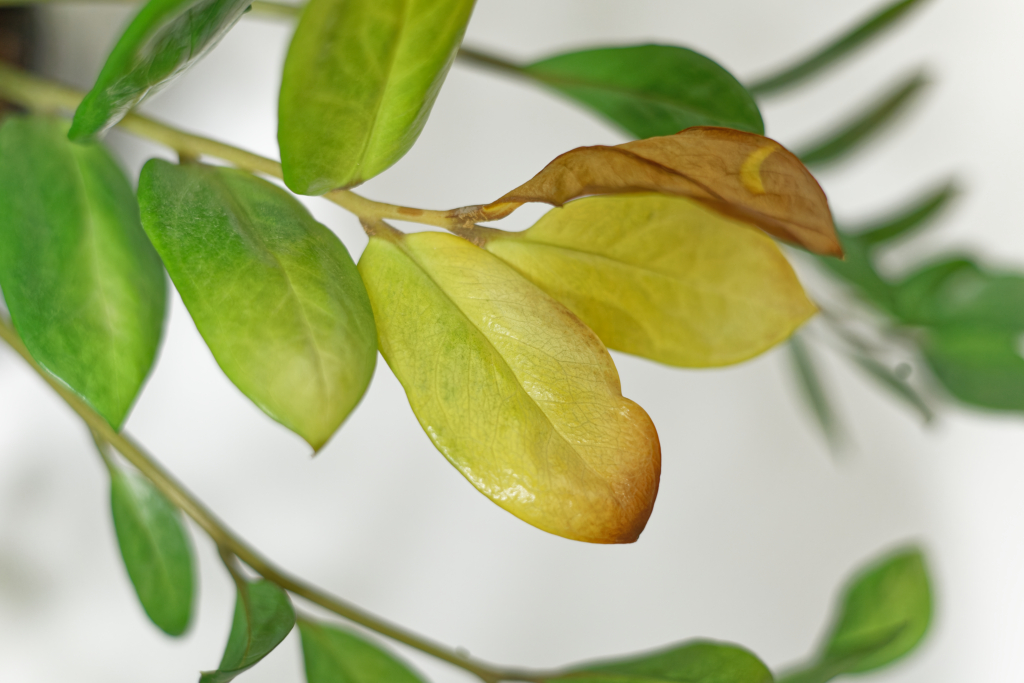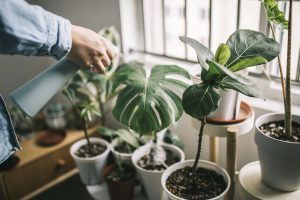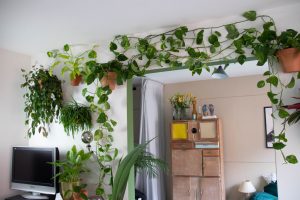Have you ever walked into a room filled with lush green plants, only to be greeted by the sight of drooping yellow leaves? It’s a disheartening and confusing experience for any plant enthusiast. But fear not! In this article, we will uncover the mysteries behind why indoor plants get yellow and provide you with some expert tips on how to revive your wilting beauties. So grab your gardening gloves and get ready to dive into the world of chlorophyll-challenged flora!
Common Causes Of Yellowing Leaves
- One of the most common causes of yellowing leaves in indoor plants is improper watering. Over-watering can lead to root rot, causing the leaves to turn yellow and eventually fall off. On the other hand, under-watering can result in dehydration and nutrient deficiency, both of which manifest as yellowing leaves. It’s crucial to strike a balance and provide your plants with the right amount of water.
- Another culprit behind yellowing leaves is inadequate sunlight exposure. While some indoor plants thrive in low-light conditions, most still require a certain amount of light to carry out photosynthesis properly. Insufficient light can inhibit their ability to produce chlorophyll, resulting in pale or yellowish foliage. Consider moving your plant closer to a window or invest in artificial grow lights to ensure they receive adequate light for healthy growth.
Lack Of Sunlight And Light Exposure
Lack of sunlight and light exposure can be a major factor in why indoor plants start turning yellow. Sunlight is the lifeline for plants, providing them with much-needed energy through photosynthesis. Without sufficient light, plants are unable to produce enough chlorophyll, which gives leaves their green color and helps them convert sunlight into energy. As a result, the leaves may start to lose their vibrancy and turn yellow.
Moreover, light exposure is not only important for the overall health of indoor plants but also plays a vital role in their growth patterns. Plants naturally lean towards sources of light as they stretch out their stems in search of more sun rays. This phenomenon is known as phototropism and ensures that every part of the plant receives an equal amount of sunlight for optimal growth. However, when indoor plants do not receive enough natural or artificial light, they may become leggy or develop uneven growth patterns due to limited access to this essential resource.

Nutrient Deficiencies And Imbalances
Nutrient deficiencies and imbalances play a crucial role in the yellowing of indoor plants. Each nutrient has a specific function, and when they are not present in adequate amounts or are out of balance, plants suffer.
For example, a lack of nitrogen can lead to overall yellowing of leaves, stunted growth, and reduced foliage density. Nitrogen is essential for the production of chlorophyll, which gives plants their green color. Similarly, insufficient iron can result in interveinal chlorosis – where the veins remain green but the spaces between them turn yellow. Iron is necessary for photosynthesis and helps transport electrons within plant cells.
On the other hand, excessive levels of certain nutrients can also be detrimental to plant health. Too much phosphorus may cause magnesium deficiency symptoms such as yellowing between veins with reddish or purple blotches on older leaves. Excessive calcium intake can inhibit potassium uptake, resulting in Leaf scorch–browning on leaf margins or tips due to water stress.
Pests And Diseases Affecting Indoor Plants
Pests and diseases can be a major headache for indoor plant enthusiasts, causing frustration and disappointment when plants start turning yellow.
- One of the most common pests affecting indoor plants is aphids. These small insects may seem harmless at first, but they quickly multiply and wreak havoc on plant leaves by sucking out their sap. This leads to stunted growth, deformed leaves, and eventually, yellowing.
- Another common culprit for yellowing indoor plants is fungal diseases. One such disease is root rot, which occurs when plants are overwatered or have poor drainage. The excess moisture creates the perfect breeding ground for fungi to grow on the roots, causing them to decay and turn yellow. As a result, the nutrients cannot be properly absorbed by the plant, leading to further deterioration.
Surprisingly enough, one other cause of yellowing indoor plants could actually be a lack of pests or diseases! While it may sound counterintuitive, some pests and diseases have evolved with certain plant species as natural defense mechanisms against excessive competition in their native environments. Therefore, without these stressors present indoors where conditions are artificially controlled and ideal for plant growth (i.e., adequate light levels and temperatures), plants might not receive enough external challenges to stimulate their growth processes fully.
Conclusion:
In conclusion, caring for indoor plants is essential to keep them healthy and vibrant. While yellowing leaves can be a cause for concern, it shouldn’t necessarily spell doom for your plant. Instead, treat it as a sign that your plant needs attention and make adjustments accordingly.
First and foremost, pay close attention to watering routines. Overwatering is a common mistake that can lead to yellow leaves. Make sure you are providing enough water without drowning the roots of your plant. On the other hand, underwatering can also cause leaves to turn yellow and dry out. Finding the right balance is crucial for maintaining healthy foliage.
Additionally, consider the lighting conditions in your home. Lack of adequate light can result in stunted growth and pale or yellowing leaves. Ensure that your plants are receiving enough natural or artificial light based on their specific requirements.
Lastly, don’t forget about the importance of fertilizing indoor plants regularly. Providing them with proper nutrients will help prevent deficiencies that manifest as yellowing leaves.
By following these simple care practices – proper watering techniques, appropriate lighting conditions, and regular fertilization – you’ll be well on your way to keeping your indoor plants happy and free from any unnecessary yellowness!






Be First to Comment